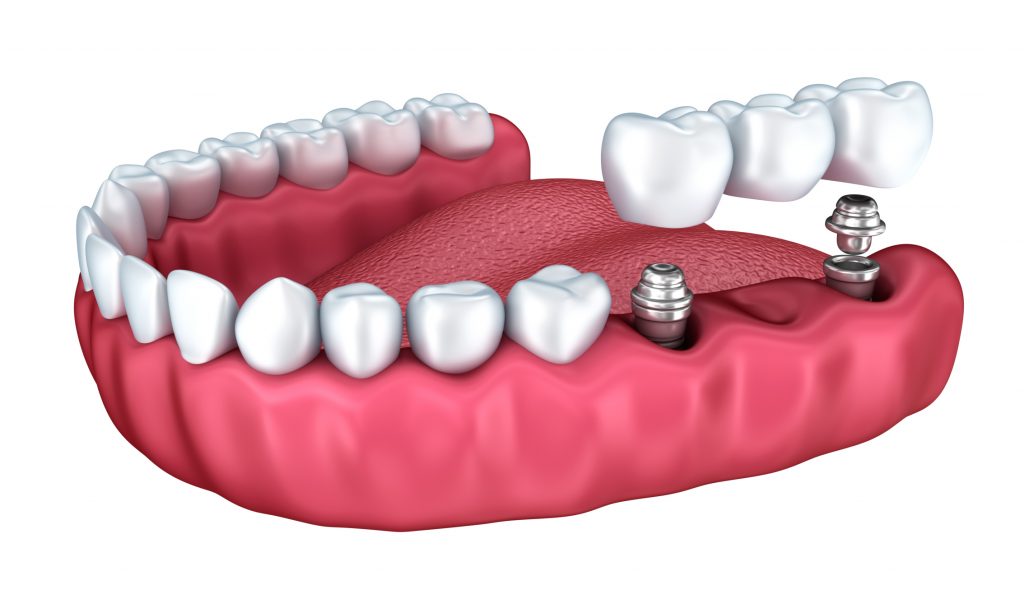
If you suffer from tooth loss, you may want to consider implants as a permanent solution to restore your smile. All-on-4 implants are a great option, especially if you still have some of your original teeth. Find out if this option might be right for you.
What Are All-on-4 Dental Implants?
The All-on-4 dental implant is a minimally invasive approach to placing implants false teeth using only four implants to support an arch. You’ll be able to have a full set of teeth without the need for multiple surgeries, and the entire process may be completed in just one appointment under local anesthesia.
What if I Still Have an Arch of Natural Teeth?
All-on-4 implants are best suited for people who have lost multiple teeth. However, if you still retained some of your natural teeth, you are not out of luck. If you have an arch of original teeth – for example, you suffered tooth loss on the top of your mouth, but the bottom arch remains intact – you can simply have implants placed on the top arch.
Who Should Consider All-on-4 Dentures?
If you have lost teeth and want a permanent set of replacements, dental implants might be for you. The All-on-4 system is preferred over dentures for many people, as they are fixed into place and won’t shift or slide out.
This procedure is also ideal if you don’t have the bone density needed to support a full set of traditional dental implants. Even better, All-on-4 implants are less expensive than traditional implants, so it will be a more affordable way to restore your smile.
If you’re interested in replacing your missing teeth or wish to explore alternatives to traditional dentures, please schedule a consultation with us. We would love to help you learn more about All-on-4 dental implants.
For more information about All-on-4 implants, call Dr. Frank S. Sciabica in Issaquah, WA at 425-392-3900 or visit www.issaquahdentists.com.
Dr. Sciabica proudly serve patients from Issaquah and all surrounding areas.
